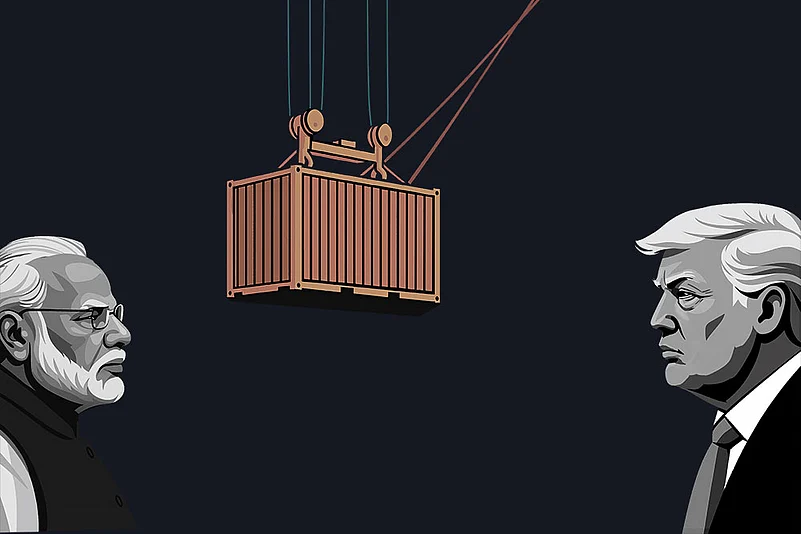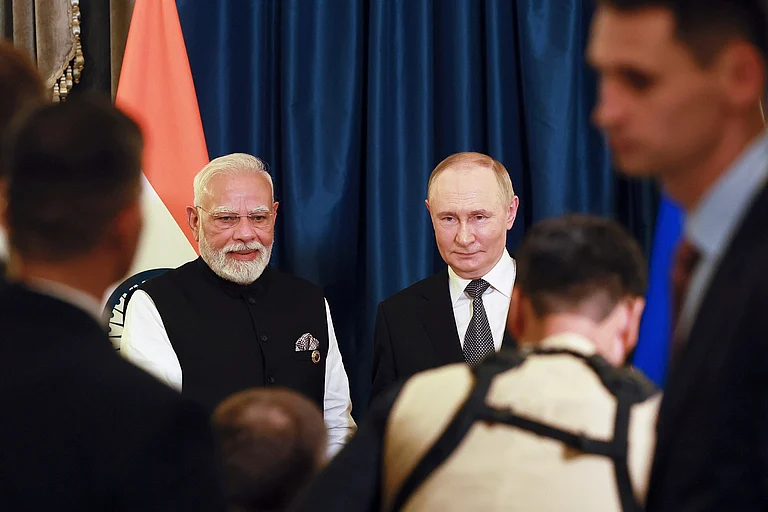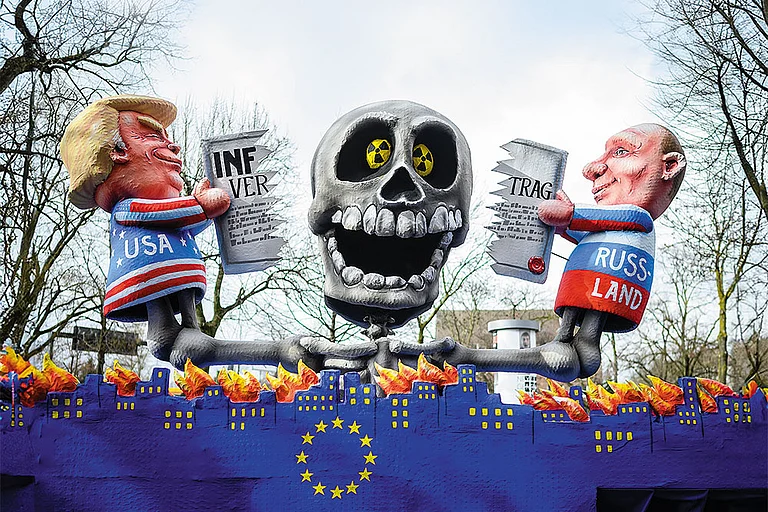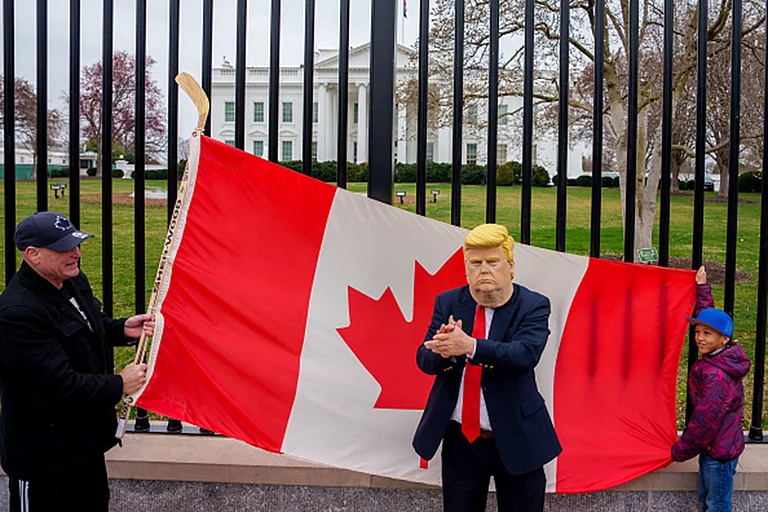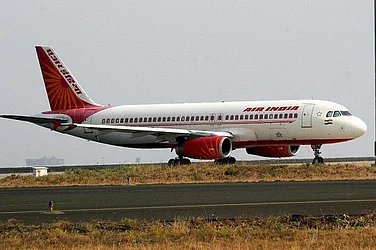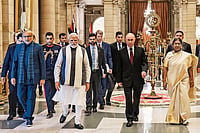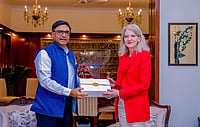
Prime Minister Narendra Modi, who has built an image of being a strong, nationalist and decisive leader, is faced with a dilemma—a questioning of his foreign policy and highly personal style of diplomacy.
Foreign Minister S. Jaishankar is visiting Moscow next week, and China’s Wang Yi was in Delhi for boundary discussions with Doval.
When Trump beat Joe Biden in last November’s presidential elections, many countries around the world were apprehensive. Trump’s mercurial temperament was well known from his previous stint
Now, with Washington demanding that New Delhi curb discounted Russian oil purchases and toe its line on foreign policy, the question looms: will India bend, or will it lean back on Russia, a tested traditional friend, and mend ties with Asian rival China? Can India-US ties survive this Trumpian assault, more so as Trump is reaching out to arch foe Pakistan? Is India unfortunately caught in the crossfire between the US and Russia, or is it something more? India had dubbed the tariffs “unfair, unjustified and unreasonable”, as both the European Union (EU) and the US itself continue to buy certain items from Russia. And what of China, the largest importer of Russian oil? The US has not targeted Beijing for this!
Prime Minister Narendra Modi, who has built an image of being a strong, nationalist and decisive leader, is faced with a dilemma—a questioning of his foreign policy and highly personal style of diplomacy. Any hint at capitulation risks political backlash, yet defiance could further escalate tension. Indians, fiercely protective of strategic autonomy, have never taken kindly to diktats. The choice ahead may determine not just the tenor of Modi’s foreign policy, but the very trajectory of India’s ambitions of one day taking its place at the high table of global affairs.
Trump’s critics in the US are questioning his reckless disregard for a relationship built step-by-step by successive governments in New Delhi and Washington with bipartisan support on both sides. A journey that began with Bill Clinton’s landmark 2000 visit and evolved with a civilian nuclear deal, defence pacts, technology partnerships, and political goodwill, there is now even a question mark on the Quad, the grouping of the US, India, Australia and Japan in place to counter China’s aggressive moves in the South China Sea and the larger Indo-Pacific waters. Whether Trump will visit India for a Quad summit later this year is now a question mark. Ironically, the US tilt towards India was to balance India against China’s growing challenge to American power in Asia.
“Trump has clearly done a great deal of damage to the US-India relationship, with the deportations, tariffs, and revival of some kind of partnership with Pakistan. But I think the Russian oil tariffs are a negotiating tactic to pressure India into a trade deal. Trump is not serious about forcing Russia to make a deal on Ukraine—or at least not willing to do what it would take. And even if Russian President Vladimir Putin ended the war, Trump would still be pressuring India on trade because of the surplus that India has,” says Ian Hall of Australia’s Griffith University.
The Modi government, with close affinity to Israel and the US, was gradually veering toward the West, though it has been steadfast in its support of Russia during the Ukraine war. But since the Trump tariffs, India is hedging its bets and recalibrating its policy.
The recent visit of National Security Advisor Ajit Doval to Moscow and his much-publicised meeting with Putin followed a call between Modi and Putin. Foreign Minister S. Jaishankar is visiting Moscow next week, and China’s Wang Yi was in Delhi for boundary discussions with Doval. The Prime Minister is visiting China for the Shanghai Cooperation Organization Summit being held in Tianjin. This will be his first visit after the military confrontation in the summer of 2020. India is gradually restoring ties with China that had gone into deep freeze after Galwan. But the mistrust between India and China is not going to disappear as long as a final boundary question is not settled. So, the Western fear of India joining the Russia-China-Iran bloc is unlikely.
Americans have always been suspicious of India’s emphasis on strategic autonomy and its past policy of non-alignment. Washington wants partners to toe the American line. Peter Navarro, Trump’s trade advisor, recently wrote in the Financial Times that India had to act as a strategic partner to the US if it wants to be treated as one. The message is simple: you are with us or against us. No tolerance for people with a foot in both camps.
“India’s simultaneous management of tariff tensions with the US and its engagement with Russia and China reflects a core feature of today’s multipolar order, which is the ability of states to cultivate multiple, overlapping alignments rather than commit exclusively to one bloc,” says Washington-based analyst Ali Mammadov. “In this system, middle powers like India pursue diversified partnerships to safeguard economic priorities, such as protecting key domestic sectors, while expanding their strategic options. These moves are less about shifting from one camp to another and more about operating in a world where influence is distributed, alliances are fluid, and geopolitical space is contested,” he explains.
Where Did India Go Wrong?
When Trump beat Joe Biden in last November’s presidential elections, many countries around the world were apprehensive. Trump’s mercurial temperament was well known from his previous stint. Unlike other governments, India was not nervous about a second Trump presidency. Indian diplomats privately said they were easy as New Delhi had the measure of the US President. After all, Modi and Trump celebrated their friendship with a Howdy Modi event attended by the American leader in Houston, the first time that a sitting president attended a public event with the supporters of a visiting leader. Modi reciprocated the gesture by organising Namaste Trump, a public rally in Ahmedabad, in his home state. Trump visited India with a large entourage, including wife Melania, daughter Ivanka and son-in-law Jared Kushner. Even when Trump by-passed Modi and invited China’s Xi Jinping to his second inauguration, the mood in Delhi continued to be upbeat, not anticipating the headwinds ahead.
But apparently India failed to understand that Trump 2.0 was very different from his previous avatar. For one, he is now hugely confident—this time he also won the popular vote. The second time around, the president knows how the system works. He has taken care to man his administration only with loyalists, all ready to bend rules if necessary to protect Trump.
Modi was among the first to meet Trump in his second term. At the end of the visit, both countries announced that talks on a bilateral trade agreement would begin soon, and a framework could be announced by autumn.
Trade Talks, Winner Takes All
The talks started in earnest with five rounds in both capitals, but the agreement was stuck. Trump began with a 25 per cent levy on Indian goods entering the US and followed it up with an additional 25 per cent levy for buying Russian oil.
Trump’s winner-takes-all attitude makes negotiations tough for countries. But most gave in. Negotiations stalled over US demands that India buy more corn, chicken, soya and dairy products from America. The corn and dairy farmers are part of Trump’s loyal MAGA (Make America Great Again) supporters, and so the push from Washington is maximum. No Indian prime minister is in a position to do so without paying a political cost.
But tariffs are just one part of the story. Another dampener for Trump was India’s denial of his role as peacemaker between India and Pakistan during Operation Sindoor. The Modi government pushed back on Trump’s bragging rights. Pakistan smartly acknowledged Trump’s role and boosted his ego by nominating him for the Nobel Peace Prize. Trump warmed up to Pakistan and broke protocol to invite Field Marshal Asim Munir for lunch at the White House. Since then, the US and Pakistan have also signed a deal on oil exploration and an American promise of investing in the country’s oil sector.
On June 17—a day before the lunch with Munir—Trump wanted Modi to stopover in Washington on his way back from Canada, where he was attending the G7 summit. Modi refused, adding to Trump’s disappointment.
Despite India’s denials, Trump continued to claim his role as peacemaker. It is well-known how Trump fancies the Nobel and loves to pose as the man who can get nations to stop fighting. During his inauguration speech on January 20, he said: “My proudest legacy will be that of a peacemaker and unifier.”
The US had intervened earlier too during India-Pakistan conflicts. It is well known that Clinton got Nawaz Sharif to stop the Kargil war. In 2019, when Indian pilot Abhinandan Varthaman was captured by Pakistan, it was the Trump administration that persuaded Imran Khan to send Varthaman back and stop further escalation. The UAE too played a role. At that time, there was no pushback from India. So when India is aware of Trump’s penchant to claim victory, the government could have let this pass.
India’s Options
India is in a tough spot and its options are limited. One course of action is for India to hunker down and wait for the Trump tenure to be over, but this will be at tremendous cost to the economy. The Alaska summit between Trump and Putin, though positive, did not result in a breakthrough. A peace deal in Ukraine will take time. Meanwhile, India’s deadline on lifting Russian oil expires on August 27. What happens after that date remains to be seen.
Defying Trump would be at a massive cost to the Indian economy, and business lobbies are already warning the government of dire consequences. Pragmatists within the government believe India will have to stop buying Russian oil. India’s relations with Russia are such that Moscow will understand Delhi’s compulsion and political relations will continue. Negotiating the 25 per cent tariff is much easier with India opening a part of its farm sector to allow for American corn and a few dairy products. India will have to buy more oil and defence equipment from the US to placate Trump. A final decision has not been arrived at yet.
However, even if that happens, India cannot fully trust the US as a reliable partner in times of need. There is a trust deficit and relations are at the lowest point since 2000.
MORE FROM THIS ISSUE
Seema Guha is a senior journalist covering foreign affairs







